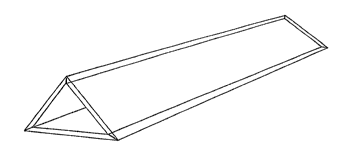Some of the information on this Web page has been provided by external sources. The Government of Canada is not responsible for the accuracy, reliability or currency of the information supplied by external sources. Users wishing to rely upon this information should consult directly with the source of the information. Content provided by external sources is not subject to official languages, privacy and accessibility requirements.
Any discrepancies in the text and image of the Claims and Abstract are due to differing posting times. Text of the Claims and Abstract are posted:
| (12) Patent Application: | (11) CA 2014617 |
|---|---|
| (54) English Title: | COMPUTER PROGRAM TEMPLATE HOLDER |
| (54) French Title: | SUPPORT DE REGLETTE DE CLAVIER POUR PROGRAMME D'ORDINATEUR |
| Status: | Dead |
| (52) Canadian Patent Classification (CPC): |
|
|---|---|
| (51) International Patent Classification (IPC): |
|
| (72) Inventors : |
|
| (73) Owners : |
|
| (71) Applicants : |
|
| (74) Agent: | |
| (74) Associate agent: | |
| (45) Issued: | |
| (22) Filed Date: | 1990-04-17 |
| (41) Open to Public Inspection: | 1991-10-17 |
| Examination requested: | 1992-04-21 |
| Availability of licence: | N/A |
| (25) Language of filing: | English |
| Patent Cooperation Treaty (PCT): | No |
|---|
| (30) Application Priority Data: | None |
|---|
ABSTRACT
A computer keyboard typically has a set of "F" (Function) keys
that facilitates the operation of the machine by making routine
functions available at the touch of a button. Most programs
today incorporate the function keys into their operation and the
program designer provides templates (cards or strips) that sit
above the keys to indicate their function when that particular
program is in use.
This invention is a device to collect, display, protect and
organize multiple commercially-produced or user-produced
templates in an orderly fashion. The invention also provides
storage and convenient access to each template.
Note: Claims are shown in the official language in which they were submitted.
Note: Descriptions are shown in the official language in which they were submitted.

For a clearer understanding of the status of the application/patent presented on this page, the site Disclaimer , as well as the definitions for Patent , Administrative Status , Maintenance Fee and Payment History should be consulted.
| Title | Date |
|---|---|
| Forecasted Issue Date | Unavailable |
| (22) Filed | 1990-04-17 |
| (41) Open to Public Inspection | 1991-10-17 |
| Examination Requested | 1992-04-21 |
| Dead Application | 1993-10-18 |
There is no abandonment history.
| Fee Type | Anniversary Year | Due Date | Amount Paid | Paid Date |
|---|---|---|---|---|
| Application Fee | $0.00 | 1990-04-17 | ||
| Maintenance Fee - Application - New Act | 2 | 1992-04-17 | $50.00 | 1992-06-18 |
Note: Records showing the ownership history in alphabetical order.
| Current Owners on Record |
|---|
| BABIN, (J.) LEONARD |
| Past Owners on Record |
|---|
| None |